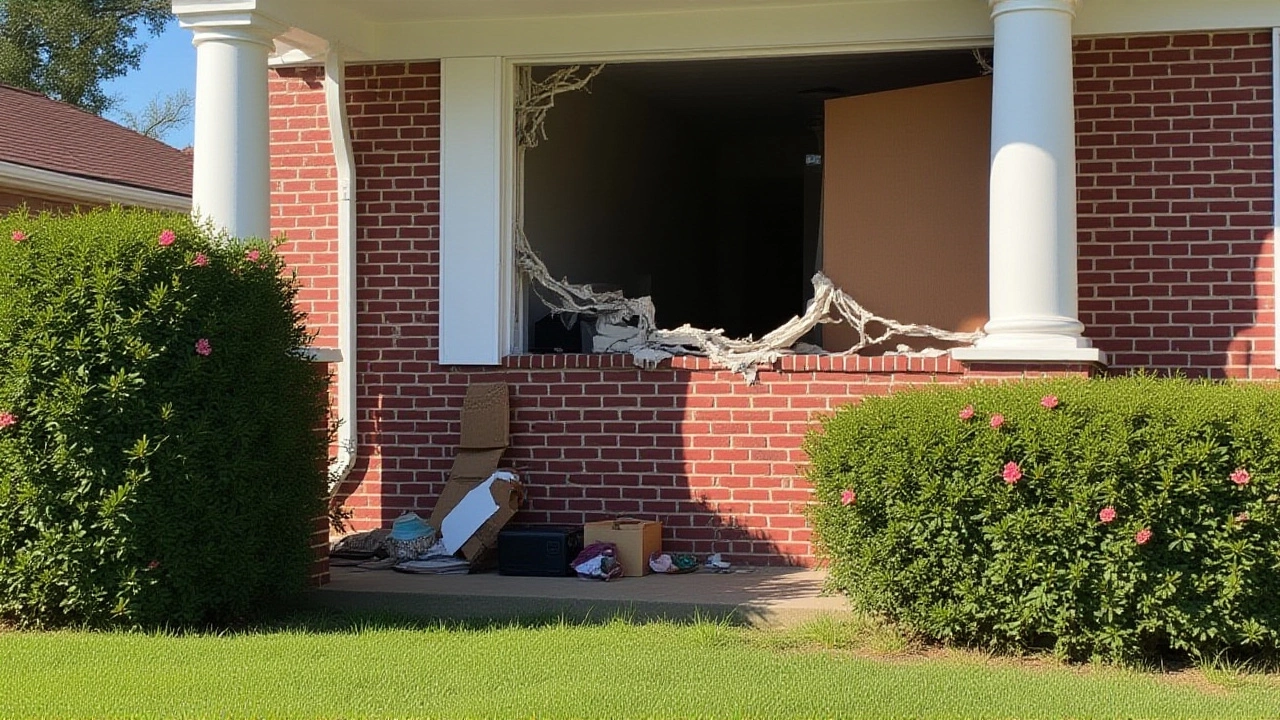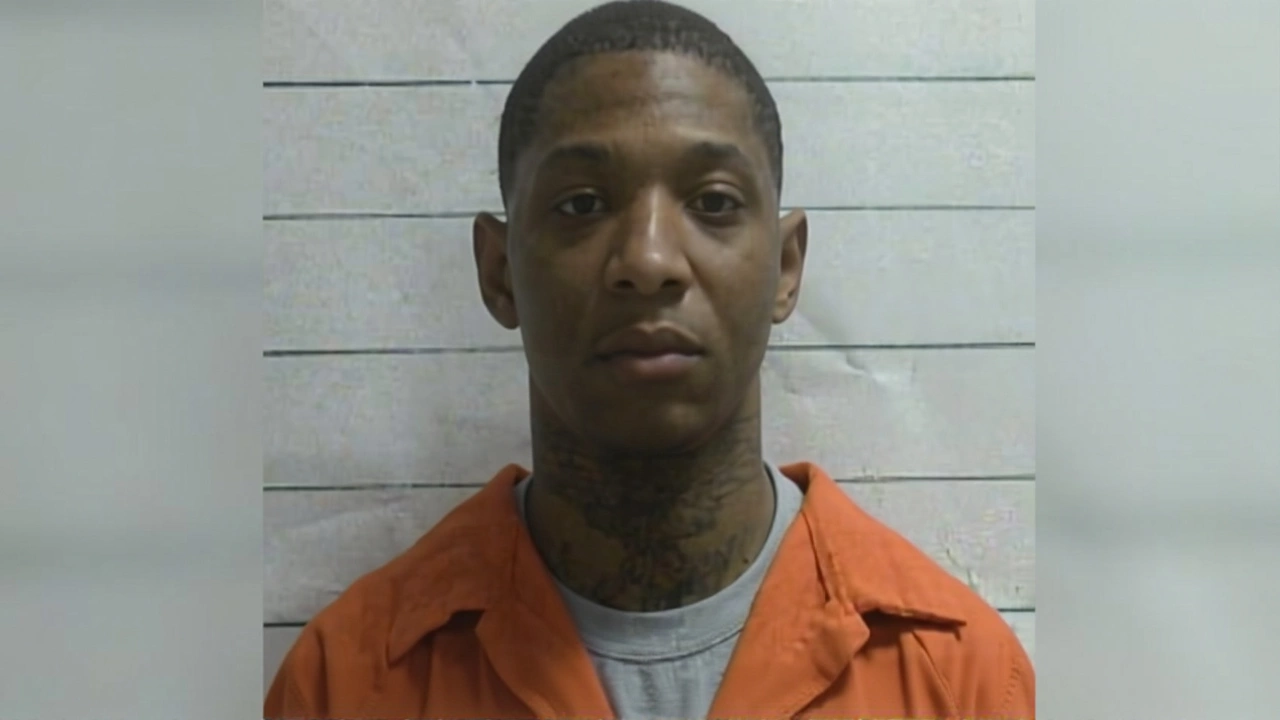When Derrick Groves finally stepped out of the shadows on October 8, 2025, the city of Atlanta held its breath. The 28‑year‑old was the lone fugitive still at large after a daring ten‑person breakout from the Orleans Justice Center in May, and his capture put an end to a 144‑day interstate chase that spanned five states.
The operation was spearheaded by the Atlanta Police Department, working hand‑in‑hand with the United States Marshals Service. At the tactical helm was Commander Cynthia Deitering, whose squad surrounded a modest house in southwest Atlanta for nearly an hour and a half before Groves surrendered without a shot fired. The whole ordeal, captured on live‑feed by local stations, felt like something out of a crime‑drama, but the stakes were very real – a dangerous escapee finally behind bars.
Background: The May 15 Mass Escape
It all began in the early hours of May 15, 2025. At roughly 1:22 a.m. CST, Groves and nine other inmates used makeshift tools to pry open a secondary gate in the west yard of the Orleans Justice Center, a 12‑story, maximum‑security facility overseen by Susan Hutson, director of the Orleans Parish Sheriff's Office. The prison, which opened in 2015, had never experienced a coordinated breakout. In the aftermath, law‑enforcement officials tallied ten escapees, labeling them #001 through #010 in internal reports.
Within 72 hours, nine of the ten were rounded up in Louisiana’s parishes – the swift takedowns were credited to the Louisiana State Police and local sheriff’s deputies. The last to elude capture was Groves, who slipped away before authorities could lock down the perimeter. He vanished into the night, his whereabouts unknown for weeks.
Manhunt Across the South
What followed was a dog‑ged pursuit that read like a road‑trip log:
- September 20, 2025 – Surveillance cameras spot a vehicle linked to Groves crossing into Georgia via the I‑59 bridge.
- September 22, 2025 – The United States Marshals Service’s New Orleans Field Office isolates a cellular ping near Hinds County, Mississippi.
- Early October – Federal agents triangulate the signal to Jefferson County, Alabama, then to Shelby County, Tennessee, and finally to Richland County, South Carolina.
- October 5, 2025 – A tip from a Georgia resident points investigators to a rundown home on the outskirts of southwest Atlanta.
Throughout, the Fugitive Apprehension Unit of the Georgia Bureau of Investigation, directed by Vic Reynolds, coordinated with the DeKalb County Police's Special Response Team and the FBI’s Atlanta Field Office Hostage Rescue Team. The collaborative effort turned a solitary manhunt into a multi‑agency operation.

The Atlanta Standoff
At 2:45 p.m. EDT on October 8, officers converged on the address, sealing off the street and establishing a perimeter. Inside, Groves—armed, according to early rumors—was reportedly alone. The tactical unit from the Atlanta Police Department’s Special Operations Division deployed a containment protocol that lingered for 87 minutes.
“We had credible intel that there was a high‑risk individual inside,” said David Salter, a reporter with WWL‑TV in New Orleans who relayed the scene via its sister station WXIA‑TV (11Alive). “But when the team approached, the suspect chose to surrender. No shots were fired.”
After the standoff, Groves was handcuffed, read his rights, and whisked to the Atlanta Police Department’s Central Precinct at 226 Peachtree Street SW. He was booked there before a federal transport plane lifted him back toward New Orleans.
Reactions From Law Enforcement
Commander Deitering praised her team’s restraint. “Our priority is safety—both for the public and the suspect,” she told a press briefing. “The cooperation we saw across state lines was exceptional, and it paid off.”
Marshals’ officials emphasized the role of technology. Cellular geolocation data, combined with toll‑booth footage, narrowed Groves’s trail to a 15‑mile radius around the Atlanta home. “It’s a testament to how modern tools can accelerate capture times,” said a senior marshal who asked to remain anonymous.
Back in New Orleans, Sheriff‑Director Hutson expressed relief. “The Orleans Justice Center has a responsibility to protect the community. This escape was a breach we take seriously, and we’re reviewing every protocol,” she said. The incident has already spurred a $2.3 million budget request for upgraded perimeter sensors and training.

What Comes Next for Groves?
Groves now faces additional charges of escape under Louisiana Revised Statute 14:110, which carries a maximum five‑year sentence. He will be transferred back to the Orleans Justice Center by 5:00 p.m. CST on October 10, 2025, according to the United States Marshals Service’s transport schedule.
Legal analysts note that his original docket—aggravated burglary with a firearm (Statute 14:60) and second‑degree kidnapping (Statute 14:44.1)—means he could be looking at a combined sentence exceeding 15 years if convicted on all counts. “The courts will likely treat the escape as an aggravating factor,” said criminal defense attorney Maria Delgado of New Orleans. “It signals a pattern of dangerous behavior.”
Meanwhile, the broader conversation circles back to prison security. The Orleans Justice Center’s first mass escape since opening has ignited debates in the Louisiana State Legislature about funding for facility upgrades. A bill introduced by Senator James Larkin (D‑New Orleans) proposes $12 million for next‑generation surveillance and staff training, slated for a vote in early 2026.
Frequently Asked Questions
How does Grover's capture affect public safety in Atlanta?
While the immediate threat from Groves has ended, the incident underscores the importance of inter‑agency cooperation. Atlanta officials say the successful arrest demonstrates that rapid information sharing can neutralize potential dangers before they materialize.
What led to the original mass escape at the Orleans Justice Center?
Investigators determined the inmates used improvised tools to force a secondary gate open in the west yard. A later audit revealed dated lock‑mechanisms and insufficient staffing during the early‑morning shift, prompting calls for a comprehensive security overhaul.
Who coordinated the interstate manhunt?
The pursuit was a joint effort among the United States Marshals Service, the Georgia Bureau of Investigation’s Fugitive Apprehension Unit, the DeKalb County Police Special Response Team, and the FBI’s Atlanta Field Office. Each agency contributed resources ranging from surveillance assets to tactical personnel.
What charges will Groves face now?
In addition to his pending aggravated burglary and second‑degree kidnapping cases, Groves will be charged with escape under Louisiana Revised Statute 14:110. If convicted on all counts, prosecutors estimate his total sentence could exceed fifteen years.
Will the Orleans Justice Center change its security protocols?
Yes. Sheriff‑Director Hutson announced an immediate review, and a state‑level bill is pending that would allocate over $12 million for upgraded perimeter sensors, electronic locks, and staff training, aiming to prevent any repeat of the May 15 breach.
